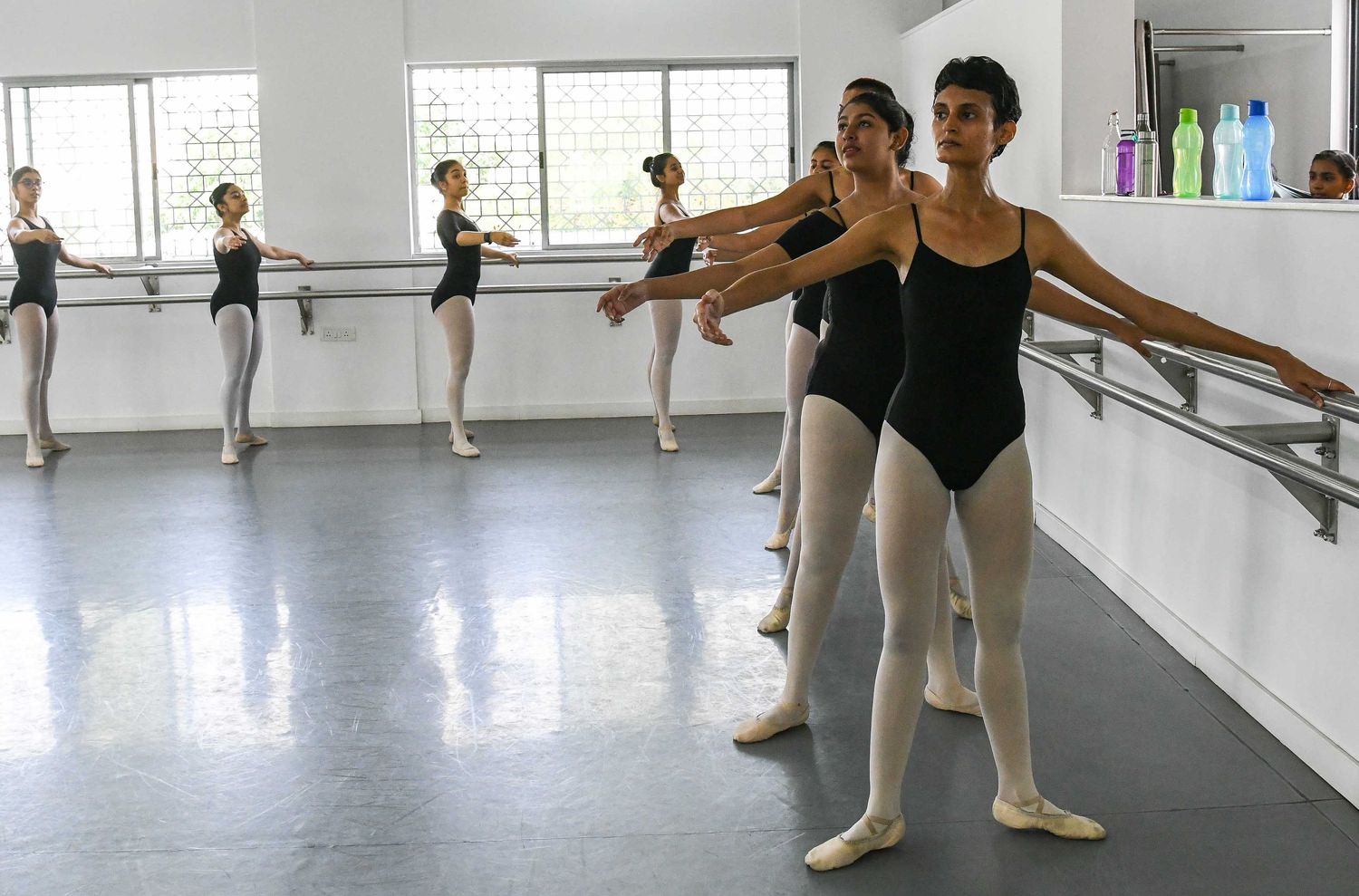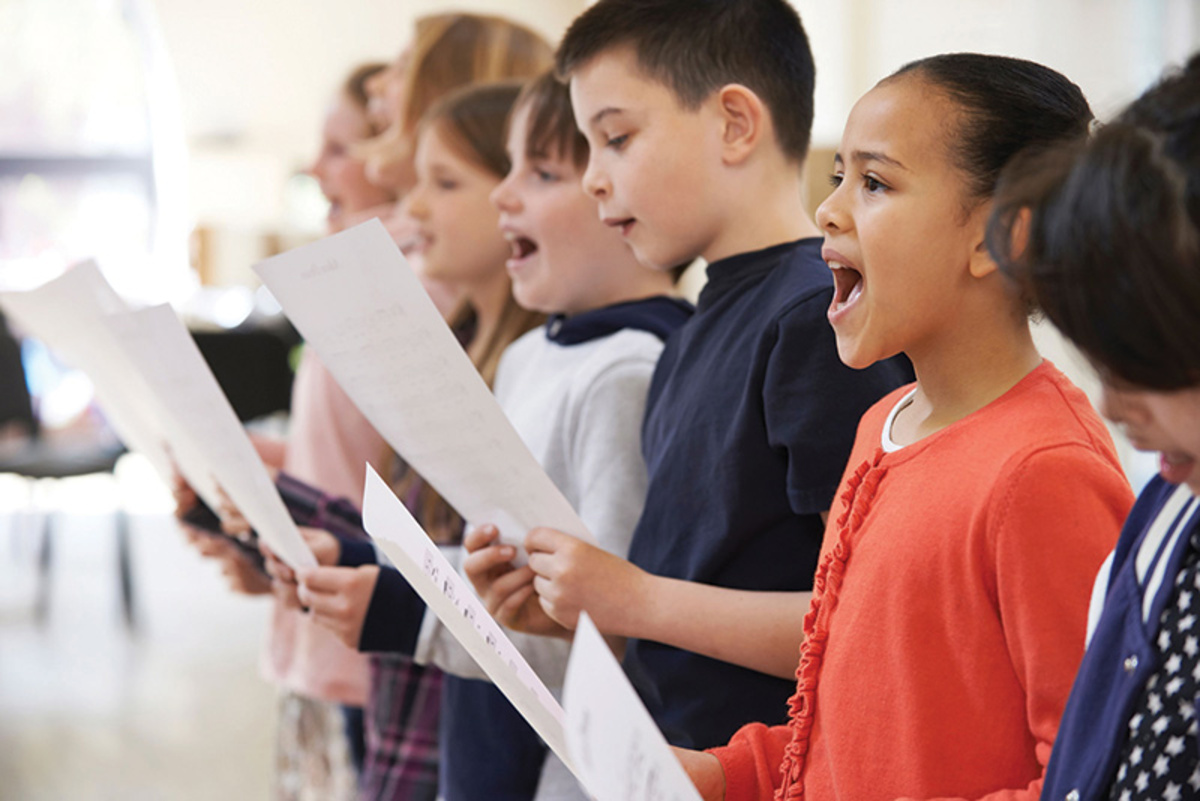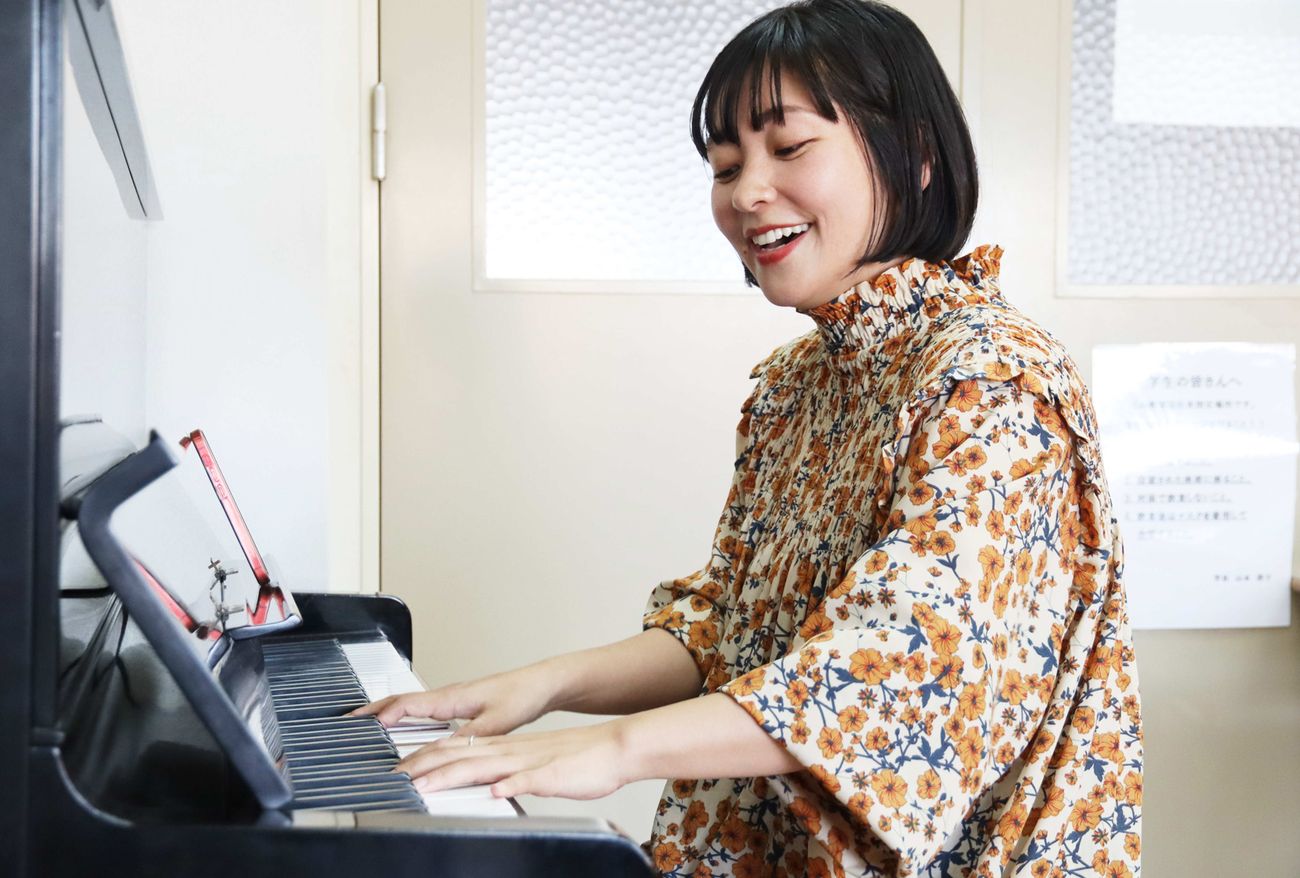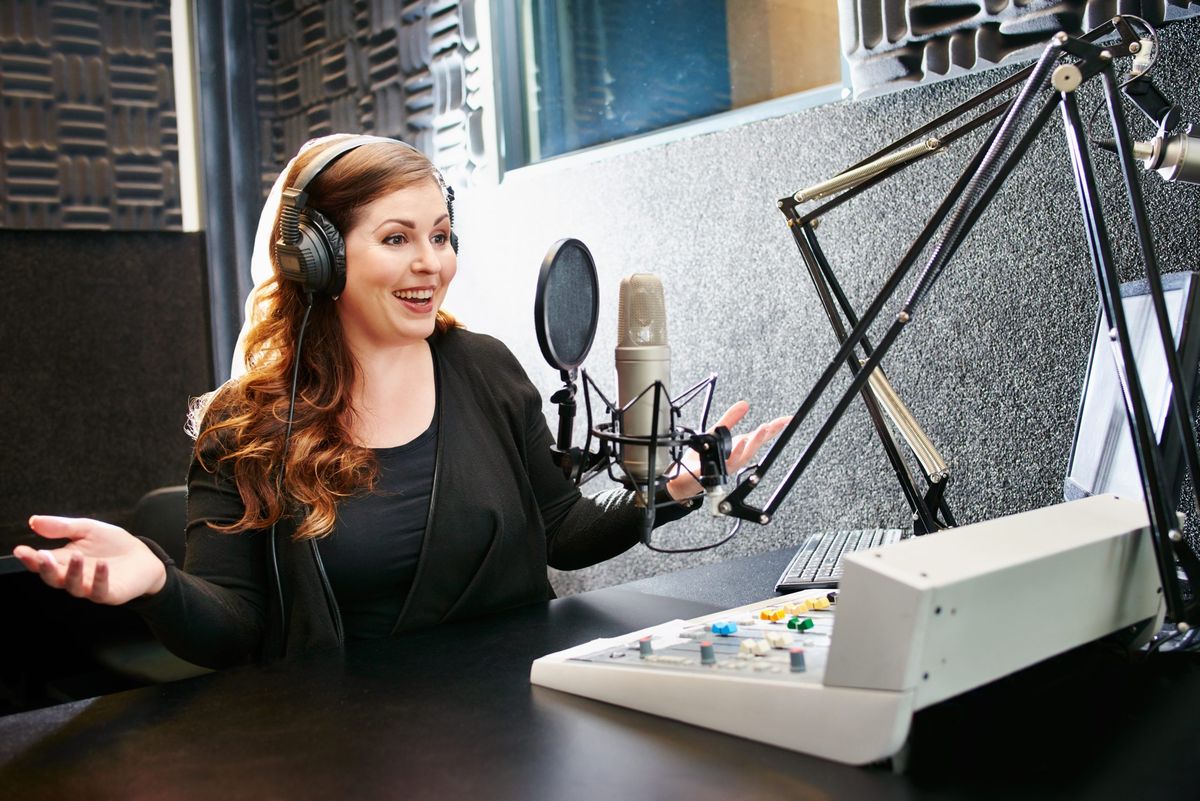Home>Events & Info>Ballet>How To Start Ballet As An Adult


Ballet
How To Start Ballet As An Adult
Modified: January 22, 2024
Discover how to start ballet as an adult and embrace the grace and beauty of this timeless art form. Begin your ballet journey today!
(Many of the links in this article redirect to a specific reviewed product. Your purchase of these products through affiliate links helps to generate commission for AudioLover.com, at no extra cost. Learn more)
Table of Contents
- Introduction
- Finding a Ballet Class
- Preparing for Your First Class
- Ballet Attire and Equipment
- Warm-Up and Stretching
- Learning Ballet Techniques
- Ballet Posture and Alignment
- Building Strength and Flexibility
- Ballet Terminology
- Ballet Etiquette and Class Structure
- Overcoming Challenges as an Adult Beginner
- Progressing in Ballet as an Adult
- Benefits of Ballet for Adults
- Conclusion
Introduction
Have you ever been captivated by the grace and elegance of ballet dancers? Perhaps you’ve been inspired by watching mesmerizing performances or dreamed of donning a pair of pointe shoes yourself. Well, you’re not alone. Ballet is a beautiful art form that has enchanted audiences for centuries.
It’s never too late to start ballet, even if you are an adult with no prior experience. Ballet not only offers the opportunity to learn a new skill but also provides a great workout and a chance to express yourself artistically. In this article, we will guide you through the process of starting ballet as an adult.
Whether you are a complete beginner or someone with a background in dance, taking up ballet as an adult can be an enriching and rewarding experience. There are numerous benefits to starting ballet as an adult, including improved posture, increased flexibility and strength, enhanced coordination, and stress relief.
While it can be daunting to step into a ballet studio for the first time, rest assured that many adults have successfully started their ballet journey. It’s important to approach ballet with a positive mindset, patience, and a willingness to learn.
In the following sections, we will explore how to find a ballet class, how to prepare for your first class, what attire and equipment you will need, and the fundamentals of ballet technique. We will also discuss ballet terminology, class structure, and etiquette, as well as how to overcome challenges and progress as an adult beginner. So let’s get started on this exciting ballet journey together!
Finding a Ballet Class
When it comes to finding a ballet class as an adult, there are a few different options to consider. Here are some steps you can take to find the right ballet class for your needs:
- Research local dance studios or schools: Start by doing some research online or asking for recommendations from friends or family. Look for studios or schools that offer adult ballet classes specifically, as these cater to the needs and abilities of adult learners.
- Check out the facility: Visit the dance studios or schools you are interested in to get a sense of the environment. Look for clean and spacious studios with adequate dance flooring, mirrors, and ballet barres.
- Consider the instructor’s experience: Find out more about the instructor who will be teaching the class. Look for instructors who have a strong background in ballet training and experience teaching adult students.
- Ask about class levels: Inquire about the different levels of ballet classes available. As an adult beginner, you’ll want to look for introductory or beginner-level classes that focus on building the foundations of ballet technique.
- Review the class schedule and location: Take into account the class schedule and location to ensure that it aligns with your availability and convenience. Choose a class that you can commit to attending regularly.
- Cost and registration process: Consider the cost of the class and any additional fees, such as registration fees or costume expenses. Make sure you understand the registration process and any requirements or prerequisites for joining the class.
Remember, it’s important to find a ballet class that suits your individual goals and needs. If possible, try to attend trial classes or observe a class before committing to ensure that the teaching style and environment align with your expectations. Don’t be afraid to ask questions or seek clarification before making a decision.
Additionally, if you are unable to find a local ballet class, you can explore online ballet classes specifically designed for adult beginners. These virtual classes provide the convenience of learning from home and often offer flexibility in terms of scheduling.
Once you have found a suitable ballet class, you’re one step closer to embarking on your ballet journey. In the next section, we will discuss how to prepare for your first ballet class as an adult.
Preparing for Your First Class
As you get ready for your first ballet class as an adult, it’s natural to feel a mix of excitement and nerves. Here are some tips to help you prepare and make the most out of your first ballet experience:
- Arrive early: Plan to arrive at the studio a few minutes before the class starts. This will give you time to familiarize yourself with the facility, change into appropriate attire, and mentally prepare for the class.
- Wear the right attire: Dress comfortably in ballet-specific attire, such as a leotard, tights, and ballet shoes. If you don’t have ballet shoes initially, you can start with socks or bare feet until you’re ready to invest in a pair. Avoid wearing baggy or restrictive clothing that may hinder movement.
- Come with an open mind: Approach your first ballet class with an open mind and a willingness to learn. Be prepared to follow instructions, ask questions, and embrace any corrections or feedback from your instructor.
- Stay hydrated: It’s important to stay hydrated before, during, and after your ballet class. Bring a water bottle with you to the studio and take sips of water as needed during breaks or whenever you feel thirsty.
- Listen to your body: Pay attention to your body and its limits. Ballet can be physically demanding, so it’s essential to listen to any discomfort or pain. Take breaks when needed and don’t push yourself too hard in the beginning. Over time, your strength and endurance will improve.
- Mentally prepare for challenges: Starting ballet as an adult may come with its own set of challenges. Accept that it may take time to grasp certain movements and techniques. Don’t get discouraged if you make mistakes or feel overwhelmed. Remember that everyone learns at their own pace.
- Bring a positive attitude: Approach your first ballet class with a positive attitude and a willingness to embrace the learning process. Enjoy the journey and celebrate small achievements along the way.
Lastly, don’t forget to have fun! Ballet is a beautiful form of expression, and it’s important to enjoy the experience of dancing and discovering the joy of ballet. So, take a deep breath, step into the studio, and get ready to embark on a fulfilling ballet journey as an adult beginner.
Ballet Attire and Equipment
When it comes to ballet, having the right attire and equipment is essential to facilitate movement and ensure comfort and safety during classes. Here are some key items you will need as an adult beginner:
- Leotard: A leotard is a one-piece fitted garment that dancers wear as the base of their ballet attire. It allows for freedom of movement and allows the instructor to see and correct your posture and alignment. Choose a color and style that you feel comfortable in.
- Tights: Ballet tights are typically worn underneath the leotard. They provide coverage for the legs and help to create clean lines. Opt for convertible tights that have a hole in the sole of the foot, which allows you to easily switch between bare feet and ballet shoes.
- Ballet Shoes: Ballet shoes are a must-have for ballet classes. They are lightweight and provide support and flexibility for the feet. It’s recommended to invest in a pair of leather or canvas ballet shoes that fit snugly but not too tight. Consult with your instructor or local dance store for the best fit.
- Hair accessories: Keeping your hair neat and out of your face is important in ballet. Consider using a bun maker or hairnet to create a tidy bun, which is the traditional hairstyle for ballet dancers. Secure it with hairpins and a hair elastic.
- Optional Accessories: While not essential, some dancers choose to wear additional accessories such as ballet skirts or leg warmers to add a touch of style or extra warmth during warm-up exercises.
It’s important to note that ballet attire is typically form-fitting to allow the instructor to assess your alignment and technique. This helps to ensure proper execution of movements and minimizes the risk of injury. Avoid wearing baggy clothing that may restrict movement or hide the body’s lines.
Additionally, be sure to check with your ballet studio or instructor if there are any specific requirements or guidelines for attire. Some studios may have specific color or style preferences for leotards or tights.
As for equipment, you generally won’t need much to get started with ballet. Most studios provide ballet barres, mirrors, and any other necessary equipment. However, it’s a good idea to have a water bottle to stay hydrated during class and a towel to wipe off sweat as needed.
By having the appropriate ballet attire and minimal equipment, you’ll be ready to step onto the dance floor with confidence and focus on your ballet technique. In the next section, we will explore the importance of warm-up and stretching before diving into your ballet class.
Warm-Up and Stretching
Before diving into the technical aspects of ballet, it’s crucial to warm up your body and engage in proper stretching. A thorough warm-up prepares your muscles and joints for the physical demands of ballet and reduces the risk of injury. Here are some key points to keep in mind when warming up and stretching:
- Start with cardiovascular exercises: Begin your warm-up with activities that raise your heart rate and increase blood flow, such as jumping jacks, jogging in place, or skipping. This helps to warm up your entire body and prepares your muscles for movement.
- Joint mobilization: Perform gentle movements that target each joint, such as ankle circles, knee bends, hip rotations, shoulder rolls, and neck stretches. This helps to lubricate the joints and increase their range of motion.
- Dynamic stretches: Incorporate dynamic stretches into your warm-up routine. These involve moving parts of your body through a controlled range of motion, such as leg swings, arm swings, and torso twists. Dynamic stretches help to improve flexibility and prepare your muscles for the specific movements in ballet.
- Specific muscle stretches: Focus on stretching the major muscle groups used in ballet, including the calves, hamstrings, quadriceps, hip flexors, glutes, and upper body muscles. Perform static stretches, holding each stretch for about 20-30 seconds without bouncing.
- Ballet-specific stretches: Include ballet-specific stretches that target areas such as the feet, ankles, and turnout muscles. These stretches can help improve your technique and flexibility in ballet movements.
- Listen to your body: Pay attention to your body during stretching and avoid pushing yourself too far. It’s normal to feel tension, but never force a stretch to the point of pain. Respect your body’s limits and progress gradually.
Remember, warming up and stretching should be a routine part of your ballet practice. It helps to prepare your body for the movements, improves flexibility, and enhances your overall performance. Additionally, stretching after your ballet class can help with muscle recovery and prevent muscle soreness.
Consult with your ballet instructor for specific warm-up and stretching exercises that are suitable for your level of experience. They can provide guidance and offer modifications or alternatives based on your individual needs.
Now that you’re warmed up and stretched, it’s time to delve into the fundamental techniques of ballet. The next section will explore the essential ballet techniques that you will learn as an adult beginner.
Learning Ballet Techniques
Ballet technique is the foundation of this beautiful art form. It encompasses a wide range of movements, positions, and coordination. As an adult beginner, it’s important to familiarize yourself with the fundamental ballet techniques. Here are some key techniques you will learn in your ballet classes:
- First Position: This is the starting position in ballet, where the heels are together and the toes are turned out to the sides. The legs are straight and aligned, forming a straight line from the feet to the hips.
- Plié: A bending of the knees that is fundamental in ballet. There are two types of plié – demi-plié (half bend) and grand plié (full bend). Pliés help to strengthen the legs, improve turnout, and develop control and stability.
- Tendu: A movement where the foot slides out on the floor, usually to the front, side, or back. Tendus help to improve foot articulation and develop strength and flexibility in the legs.
- Port de Bras: Refers to the movement of the arms in ballet. There are various port de bras positions and patterns, which add grace and fluidity to the movements. Proper arm placement and coordination with the rest of the body are essential to achieve elegance in ballet.
- Relevé: A rising up onto the balls of the feet, which strengthens the calves and improves balance and stability. Relevé is often performed in conjunction with other movements like jumps and turns.
- Adagio: A slow and lyrical combination of movements that emphasize control, balance, and graceful transitions. Adagio sequences allow dancers to showcase their technique and artistry.
- Pirouette: A turn on one leg performed while maintaining proper body alignment and control. Pirouettes require strong core muscles, balance, and spotting technique (focus on a fixed point to prevent dizziness).
- Grand Allegro: A high-energy combination of jumps and leaps, showcasing power and athleticism. This is a more advanced ballet technique that is typically introduced as you progress in your training.
Learning ballet techniques takes time and practice. It’s important to listen to your instructor’s guidance, ask questions when needed, and focus on proper form and alignment. Ballet technique requires precision, attention to detail, and a strong understanding of body mechanics.
Remember, progress in ballet is a journey. Be patient with yourself and celebrate every small improvement you make along the way. Ballet is not just about perfecting the movements; it’s also about expressing yourself artistically and enjoying the process of dancing.
In the next section, we will discuss the importance of maintaining proper posture and alignment in ballet.
Ballet Posture and Alignment
Proper posture and alignment are crucial in ballet as they contribute to the overall form and aesthetic of the dancer. Ballet technique emphasizes the importance of maintaining a strong and aligned body position throughout movements. Here are key points to consider regarding ballet posture and alignment:
- Head and Neck: Keep the head held high, with the gaze lifted and focused forward. The neck should be lengthened and aligned with the spine, avoiding any tension or strain.
- Shoulders: Keep the shoulders relaxed and down, avoiding any tension or hunching. Imagine gliding the shoulder blades down the back, creating a broad and open chest.
- Spine: Maintain a lengthened and vertical spine, with the natural curves of the spine being present. Avoid slouching or overarching the back. Engaging the core muscles helps to support a strong and stable posture.
- Hips: Achieving proper hip alignment is crucial in ballet to facilitate the turnout. The hips should be squared and level, eliminating any tilting or twisting. Proper turnout is a gradual process that develops over time with consistent practice and strengthening of hip muscles.
- Legs and Feet: The legs should be straight and elongated, with the knees extending directly over the toes. Proper turnout is essential in ballet, where the feet are rotated outward from the hips. The placement and alignment of the feet and toes play a significant role in balance, stability, and executing movements with precision.
- Arms: Maintain proper arm positions and alignment as instructed by your teacher. This includes keeping the elbows lifted and rounded, wrists relaxed, and fingers elongated. The arms should flow naturally with the movements and enhance the overall grace and expression of ballet.
Developing proper posture and alignment in ballet requires conscious effort and consistent practice. Your instructor will offer corrections and guidance to help you refine and improve your alignment. It’s important to be receptive to feedback and work on making adjustments to your body position.
Good posture and alignment not only contribute to the aesthetic appeal of ballet but also prevent injuries and allow for optimal movement efficiency. Maintaining proper alignment throughout your ballet practice helps to engage the correct muscles, improves balance, and allows for a greater range of motion.
Remember, achieving and maintaining correct posture and alignment in ballet is an ongoing process. Stay mindful of your body position and continue to work on refining your technique over time. In the next section, we will explore the importance of building strength and flexibility as an adult beginner in ballet.
Building Strength and Flexibility
Building strength and flexibility are vital components of ballet training. As an adult beginner, it’s important to focus on developing both aspects to improve your technique and prevent injuries. Here are key points to consider when working on building strength and flexibility for ballet:
- Conditioning Exercises: Incorporate strength and conditioning exercises into your training routine to target the specific muscles used in ballet. Focus on exercises that strengthen your core, legs, and feet, such as planks, lunges, squats, calf raises, and foot exercises like relevés and foot arch stretches.
- Resistance Training: Consider incorporating resistance training, such as using resistance bands or light weights, to further challenge and strengthen your muscles. These exercises can help improve overall muscular strength and control.
- Stretching Routine: Dedicate time to regular stretching to improve flexibility. Focus on stretches that target the major muscle groups used in ballet, such as the hamstrings, hip flexors, quadriceps, calves, and feet. Aim for a combination of static stretches (holding a position) and dynamic stretches (moving through a range of motion).
- Strengthening Turnout: Turnout is a fundamental element in ballet, and building strength in the hips, buttocks, and thigh muscles can help improve your ability to achieve and maintain a proper turnout. Practice exercises like clamshells, side leg lifts, and turnout exercises at the barre to target these muscles.
- Ballet-Specific Exercises: Supplement your training with ballet-specific exercises that target technique and muscle control. These may include tendus, développés, battements, and relevés, which help to improve strength, coordination, and precision in ballet movements.
- Consistency and Progression: Remember to approach strength and flexibility training gradually and progressively. Start with exercises and stretches that are appropriate for your current level and gradually increase the intensity and duration over time. Listen to your body and avoid overexertion or pushing yourself too hard too soon.
Building strength and flexibility in ballet is an ongoing process. It requires patience, dedication, and consistent practice. Set realistic goals for yourself and celebrate small milestones along the way. Remember that each individual’s progress is unique, and comparison to others is not productive.
Additionally, it’s essential to listen to your body and be mindful of any discomfort or pain. If you experience any persistent discomfort or pain, consult with your instructor or a healthcare professional to ensure proper form and technique and to address any potential underlying issues.
By focusing on building strength and flexibility, you’ll be able to enhance your overall performance, execute movements with more control and precision, and reduce the risk of injuries. In the next section, we will explore the significance of ballet terminology and its role in understanding and executing ballet movements.
Ballet Terminology
Ballet has its own unique language of movement, with a rich vocabulary of terms that dancers use to describe specific steps, positions, and actions. Understanding ballet terminology is essential for effective communication and learning in class. Here are some commonly used ballet terms you should familiarize yourself with:
- Plie: A bending of the knees. This fundamental movement is used to initiate and transition between various ballet steps.
- Tendu: A movement where the foot slides along the floor, either to the front, side, or back.
- Adagio: A slow and controlled sequence of movements that showcases grace and fluidity.
- Grand Allegro: A fast and energetic combination of jumps and leaps.
- Pirouette: A turn executed on one leg, often performed with the supporting leg in a turned-out position.
- Arabesque: A pose where one leg is extended behind the body while balancing on the other leg.
- Chassé: A step where one foot “chases” or slides after the other foot, often performed in a sideways direction.
- Pas de deux: A dance duet performed by a male and female dancer, showcasing partnering and synchronized movements.
- En pointe: The technique of dancing on the tips of the toes, usually performed with the support of pointe shoes.
- Port de bras: The movement of the arms in ballet, emphasizing fluidity and grace.
Learning ballet terminology helps to develop a common language among dancers and instructors, facilitating clear and efficient communication during class. It allows instructors to provide precise instructions, corrections, and choreographic guidance, while also enabling dancers to understand and execute movements effectively.
While it may feel overwhelming at first, don’t worry if you don’t grasp all the terms immediately. Ballet terminology takes time to become familiar with, and you will continue to learn and reinforce these terms as you progress in your ballet training.
It can be helpful to keep a ballet terminology guide handy or refer to online resources that provide detailed explanations and demonstrations of the various terms. Practice repeating the terms aloud and associating them with their corresponding movements to reinforce your understanding.
Embrace the beauty of ballet terminology as it adds depth and elegance to the art form. As you become more comfortable with these terms, you’ll find that they become second nature, enabling you to communicate and express yourself confidently through dance.
Next, we will explore ballet etiquette and the structure of a typical ballet class.
Ballet Etiquette and Class Structure
Embracing proper ballet etiquette and understanding the structure of a ballet class is essential for a positive and respectful learning environment. Here are some important aspects of ballet etiquette and the typical structure of a ballet class:
- Punctuality: Arrive on time for your ballet class to show respect to your instructor, fellow dancers, and the art of ballet. Arriving late disrupts the flow of the class and can cause you to miss important warm-up exercises.
- Attire: Dress in appropriate ballet attire, including a leotard, tights, and ballet shoes. This allows the instructor to observe your alignment and provides freedom of movement. Pull your hair back neatly and secure it so that it doesn’t obstruct your vision or distract you during class.
- Respect for the Space: Treat the ballet studio with respect. Keep it clean and tidy, and avoid placing personal belongings in the dance area. Be mindful of others by not taking up unnecessary space or blocking the mirrors.
- Listening and Following Instructions: Listen carefully to your instructor’s explanations and demonstrations. It’s important to follow their instructions as closely as possible. Ask for clarification if you are unsure about any aspect of the exercises or combinations.
- Quiet and Focused Learning: Maintain a quiet and focused attitude during class. Avoid unnecessary talking or distractions that may disrupt your own concentration or that of others. Stay engaged in the class and remain focused on your own improvement.
- Class Structure: A typical ballet class consists of a warm-up, barre exercises, center work, and cool-down. The warm-up and barre exercises focus on building strength, alignment, and technique. Center work includes movements such as adagio, turns, and jumps performed away from the barre. The cool-down involves stretching to release tension and improve flexibility.
- Respecting Classmates: Ballet is a collective learning experience. Treat your fellow dancers with respect and courtesy. Avoid disrupting their space or movements and be supportive and encouraging to others. Celebrate everyone’s progress and accomplishments.
- Teacher-Student Relationship: Approach your teacher with respect, attentiveness, and a willingness to learn. Accept corrections and feedback graciously, as they are meant to help you improve. Be open to constructive criticism and use it as an opportunity for growth.
By adhering to ballet etiquette and understanding the structure of a ballet class, you create a positive and harmonious learning environment that benefits everyone involved. Respect for your fellow dancers, instructor, and the art form itself fosters a sense of community and growth within the ballet studio.
In the next section, we will discuss common challenges that adult beginners in ballet may encounter and how to overcome them.
Overcoming Challenges as an Adult Beginner
As an adult beginner in ballet, you may encounter various challenges along your journey. It’s important to remember that these challenges are natural and can be overcome with determination and a positive mindset. Here are some common challenges adult beginners face and strategies for overcoming them:
- Physical Limitations: Adults may have different physical abilities and limitations compared to younger dancers. Accept and embrace your body’s unique strengths and challenges. Work within your range and gradually build strength and flexibility over time. Listen to your body and make modifications when necessary.
- Mind-Body Coordination: Ballet requires precise coordination between your mind and body. It may take time to develop this connection and become comfortable with the specific movements. Practice regularly and focus on muscle memory to enhance coordination and fluidity in your dancing.
- Pace of Progression: Adult beginners often expect quick progress and may feel discouraged when progress seems slow. Remember that ballet is a journey, and progress varies from person to person. Celebrate small victories and milestones along the way, and stay committed to consistent practice and improvement.
- Mental Challenges: Ballet can be mentally demanding, requiring focus, discipline, and perseverance. Stay positive and motivated, even during moments of frustration. Embrace the learning process and view each challenge as an opportunity for growth. Surround yourself with a supportive community of fellow dancers who understand and encourage your progress.
- Comparison to Others: Avoid comparing yourself to more experienced dancers or younger beginners. Everyone learns at their own pace, and each journey is unique. Focus on your own progress and celebrate your personal achievements. Remember that ballet is a personal expression and not solely about reaching a certain level.
- Feeling Self-Conscious: It’s natural to feel self-conscious as an adult beginner in a class of diverse dancers. Remember that everyone has their own insecurities and struggles. Focus on your own growth and the joy of dancing. Embrace the supportive environment of the ballet community, where everyone shares a common love for the art form.
By acknowledging and addressing these challenges, you can cultivate a resilient and determined mindset that will carry you through any obstacles you may encounter as an adult beginner in ballet. Embrace the journey, stay committed, and celebrate the progress you make along the way.
In the next section, we will explore how you can continue progressing in ballet as an adult and set goals for your ongoing development.
Progressing in Ballet as an Adult
Continuing to progress in ballet as an adult requires dedication, consistency, and a growth mindset. While progress may look different for each individual, there are steps you can take to further develop your skills and deepen your love for ballet:
- Set Goals: Establish clear and realistic goals for your ballet journey. Focus on specific aspects you want to improve, such as technique, flexibility, or performance quality. Breaking down your goals into smaller milestones can help you stay motivated and measure your progress.
- Consistent Practice: Regular practice is key to improvement in ballet. Establish a consistent training schedule that works for you and commit to it. Make the most of your practice time by focusing on technique, musicality, and artistry. Consistency will yield noticeable progress over time.
- Seek Feedback and Instruction: Continue to seek feedback from your instructor and actively apply their corrections and suggestions. Consider taking private lessons or workshops to receive individualized guidance and deepen your understanding of technique and artistry.
- Explore Different Styles: While ballet is the foundation, don’t hesitate to explore other dance styles. Incorporating different dance forms, such as contemporary or jazz, can enhance your movement quality, versatility, and creative expression. Broadening your dance repertoire can also bring fresh inspiration to your ballet training.
- Perform and Challenge Yourself: Look for opportunities to perform or participate in ballet recitals, showcases, or workshops. Performing allows you to apply your skills, gain confidence, and experience the joy of sharing your artistry with others. Push yourself outside of your comfort zone and take on challenging roles or variations that will push your abilities to new heights.
- Embrace Continuous Learning: Never stop learning and seeking new knowledge. Read books, watch performances, attend ballet workshops, and immerse yourself in the rich history and artistry of ballet. Engaging with the wider ballet community can inspire you and deepen your understanding of the art form.
- Maintain a Healthy Lifestyle: Take care of your physical and mental well-being to support your ballet practice. Eat a balanced diet, stay hydrated, get enough rest, and engage in cross-training activities that complement ballet, such as yoga or Pilates. Prioritize self-care to prevent burnout and maintain a positive mindset.
Remember, progress in ballet is a personal journey. Embrace your individuality, celebrate your achievements, and enjoy the process of growth and discovery. Every step forward, no matter how small, adds to your overall development as a dancer. Stay committed, stay motivated, and continue to pursue your passion for ballet.
In the final section, we will explore the numerous benefits that ballet offers to adult learners.
Benefits of Ballet for Adults
Ballet is not only a beautiful art form but also offers numerous benefits to adult learners. Whether you are starting ballet as a hobby or pursuing it with a serious commitment, here are some key benefits you can gain from practicing ballet as an adult:
- Improved Physical Fitness: Ballet is a rigorous physical activity that helps to improve strength, flexibility, endurance, and cardiovascular fitness. Regular ballet practice can tone and sculpt muscles, improve posture, and enhance overall body coordination and control.
- Enhanced Body Awareness: Ballet requires a high level of body awareness and control. Through constant practice, adults can develop a deeper connection with their bodies, becoming more in tune with their alignment, balance, and movement efficiency.
- Increased Flexibility: Ballet training involves a range of dynamic and static stretches that can significantly improve flexibility over time. Increased flexibility not only enhances aesthetic lines and extension but also helps with injury prevention and everyday functional movements.
- Improved Posture and Alignment: Ballet promotes correct posture and alignment, which carries over into daily life. Adults who practice ballet experience improved posture, reduced back pain, and increased body confidence.
- Stress Relief and Emotional Well-being: Ballet provides an opportunity to escape from the stresses of daily life and enter a state of focused mindfulness. The blend of physical exertion, artistic expression, and the joy of dance releases endorphins, promoting a sense of relaxation and positive well-being.
- Artistic Expression and Creativity: Ballet is a form of artistic expression that allows adults to express their creativity. Through movement and interpretation, dancers can convey emotions and stories, offering a unique outlet for self-expression.
- Mental Discipline and Focus: Ballet requires mental discipline, focus, and concentration. Practicing ballet as an adult can improve cognitive skills, such as memory, attention to detail, and multitasking ability, as dancers must remember choreography and execute precise movements.
- Community and Camaraderie: Engaging in ballet classes as an adult provides an opportunity to connect with like-minded individuals who share a passion for dance. The supportive and inclusive environment of the ballet community fosters lasting friendships and a sense of belonging.
- Continual Learning and Personal Growth: Ballet is a lifelong learning journey. Adults who practice ballet continuously challenge themselves, set goals, and strive for personal growth. This mindset of growth and self-improvement extends beyond the dance studio, positively impacting other areas of life.
It’s never too late to start ballet as an adult and experience these wonderful benefits. Embrace the joy and fulfillment that ballet brings and embark on a fulfilling journey of self-discovery, physical well-being, and artistic expression.
As we conclude this article, we hope you feel inspired to take the leap into the world of ballet as an adult. Embrace the challenges, celebrate your progress, and enjoy the beauty and artistry of this timeless dance form.
Conclusion
Ballet is a captivating and extraordinary art form that offers a unique and rewarding experience for adult beginners. Starting ballet as an adult may seem daunting at first, but with the right mindset, dedication, and supportive guidance, you can embark on a fulfilling journey of self-expression, physical fitness, and personal growth.
In this article, we explored the various aspects of starting ballet as an adult, including finding the right class, preparing for your first class, understanding ballet attire and equipment, and learning essential ballet techniques. We discussed the importance of warm-up and stretching, proper posture and alignment, and the significance of ballet terminology and etiquette.
We also delved into the common challenges you may encounter as an adult beginner and provided strategies for overcoming them. Furthermore, we highlighted the importance of setting goals, staying consistent, seeking feedback, and embracing continuous learning to continue progressing in ballet as an adult.
Lastly, we discussed the numerous benefits that ballet offers to adult learners, including improved physical fitness, enhanced body awareness, increased flexibility, improved posture, stress relief, artistic expression, mental discipline, and a sense of community.
Remember, ballet is a personal journey, and progress is unique to each individual. Embrace the joy and fulfillment that ballet brings, and celebrate the growth and achievements, no matter how small. Continue to nurture your love for ballet and enjoy the transformative power it can have on your body, mind, and spirit.
So, take the first step, find a ballet class that resonates with you, and let the music and movement guide you towards a world of grace, beauty, and self-discovery. The enchanting world of ballet awaits you, and there is no better time than now to start your ballet journey as an adult.











